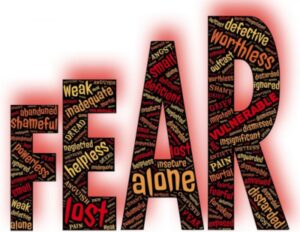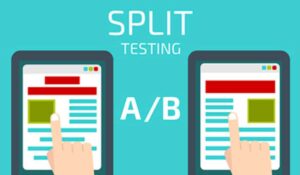One of the most important elements of effective copywriting is the “big idea”.
The most successful direct-response sales letters are the ones that focus on one big idea, to the exclusion of others. If your copy has struggled to get the response you anticipated it may be down to the fact that you are neglecting this important truth. Incorporating this in to your copy will dramatically change your results. This could be the one thing that has prevented your copy from drawing in customers and leading them to the sale.
You may have heard about the “big idea” before but not really understood it in any depth. This article will give you a clear understand of exactly what the big idea is, and how you can incorporate it in to your sales copy to start seeing better results.
What is the “big idea”?
David Ogilvy mentions this in his classic book – Ogilvy on Advertising:
“It takes a big idea to attract the attention of consumers and get them to buy your product. Unless your advertising contains a big idea, it will pass like a ship in the night.” – David Ogilvy
Ogilvy was an advertising legend and is considered one of the all-time great copywriters. He understood that even though your product may offer a hundred benefits or emotional payoffs, the key to selling more is to focus your copy on one core idea, which encapsulates the main benefit and core emotion you want your prospect to experience.
This makes sense, as trying to focus on all of your product’s benefits and attributes would make your copy too long, and would allow your readers to lose attention, especially if you are highlighting benefits and ideas that may be irrelevant to them.
Why does the big idea make your copy more powerful?
When you focus on one main idea or benefit you are focusing on one key driver that will motivate your reader to buy. When you build your copy around this one idea you are able to hammer the point home several times throughout your copy, and address the same idea from different angles.
Sales copy that is focused around one big idea is similar to a laser beam – highly focused and much more powerful. It goes straight to the target and doesn’t lose any of its focus or concentrated power. Contrast that to copy which focuses on 10 different ideas or benefits. This sort of copy can be compared to the light emitted from a bedside lamp – the beam is not focused at all, instead it is scattered all over the place because is not concentrated on a single point.
When you center your copy around one big idea it is just like a focused laser beam. It is much more direct and effective. Your readers know exactly what your product will do for them, the benefits they will enjoy as a result, and the emotions they will feel.
That’s the power of focusing on one big idea. Your instincts may tell you to include as many of your product’s benefits in your copy as possible to appeal to as wide an audience as possible, but you should resist this urge.
You shouldn’t be trying to sell you product or appeal to everyone in the marketplace. You should focus on your core target audience, and write your copy for that segment.
When you can appeal to the core of your target audience your copy will be more relevant and therefore more effective, and you will sell more products.
Example: Lets say you are selling a new supplement that aids weight loss, helps reduce blood pressure, and boosts energy.
It would be very tempting to write about all of these benefits equally, but as mentioned above you must resist this urge. Instead, narrow down your target market and start from there.
What is the main benefit or reason why someone would buy this supplement? The main reason is weight loss. Therefore your core market in this instance are those who are looking to lose weight – so losing weight is the one big idea which you should focus your copy on.
The other benefits such as increased energy and lower blood pressure are additional benefits which you can mention, as long as you relate them back to the main idea.
One big idea, one main benefit, one core emotion
In keeping with the theme of focusing on one key thing or big idea, its important to note that this also applies to the benefits and emotions that you focus your copy on.
When you have identified your one big idea, you also have to focus on one main benefit your prospects desire, and one core emotion that they want to feel.
Example: Using the supplement example we mentioned above, lets see what our one main focus is in each area:
Big idea: Makes weight loss easier
Main benefit: Increased life-span and better health, which means you will be here for your family and loved ones, and be able to enjoy life with them.
Core emotion: The feeling of being able to share precious moments with your family and loved ones, to live long enough to know your grandchildren and be a part of their lives, to enjoy getting old with your spouse etc.
You can see from the example how you are able to focus in on one specific idea, one core benefit, and one core emotion, and how you can create powerful copy around those elements. Anyone reading this sales letter would know exactly what the benefits of buying and using this supplement are.
You can mention the other benefits such as increased energy and reduced blood pressure, but it’s important to tie them back and relate them to your one big idea, main benefit, and core emotional appeal.
Different segments of your market may respond better to different big ideas for the same product, so you should test out different ideas against different segments of your audience. Losing weight to increase life-span may be effective as the big idea for an older demographic, whereas losing weight to improve sex life may prove to be a more effective big idea for a younger segment of your target audience.
Always test your ideas out and see what ideas the different segments of your audience respond best to.
Make your big idea clear
Your one big idea should be reflected in your headline and subsequent sub-headings. This serves a few purposes, including helping to narrow down your target audience.
By creating a headline which makes your big idea clear to your readers you will filter out those people who aren’t in your target audience, whilst grabbing the attention of those who are in your target audience. This is especially important if you are using online marketing and paid traffic sources. A well-written headline can prevent unqualified prospects from clicking on your ad and wasting your ad budget.
Having your big idea reflected in your sub-headings makes you copy easier to read and navigate, and allows you to direct your reader’s attention on the key things you want them to know.
Keep it simple
This idea of focusing your copy on one big idea is simple, yet it has been proven to be highly effective.
Some of the best direct-response copywriters and marketers have proven that focusing your copy on one central idea or theme leads to better response rates. When you incorporate the one big idea in to your writing your copy will be more succinct. It will be easier to write, and also easier for your audience to read.
It will be make your job of writing copy easier and quicker and allow you to establish a deeper rapport with your prospects. This in turn will improve your response and sales rate.
A proven copywriting formula
For a proven copywriting formula that you can use to help implement your big idea, try using the Hook, Story, Offer framework.
The Hook, Story, Offer framework provides you with a clear formula to follow when writing your copy.
The hook is where you express your big idea in a succinct and powerful way that literally “hooks” readers in. Your hook normally takes the form of your headline. Once you’ve got a readers attention with your hook, you tell them your story.
This is where you explore the big idea in more detail, and add in the elements of emotion to really tie the features and benefits of your product back to your big idea and make it resonate with your prospect on an emotional level.
You then proceed to the final stage, which is to make your offer.
Hook, Story, Offer is a simple, yet highly effective formula to follow. It allows you to take your big idea and apply it in way that grabs attention, allows you to explain your story and bid idea, and lead your prospect to your offer in a natural and non-aggressive way.
For more copywriting insights check out our copywriting articles, tips, and tricks.




